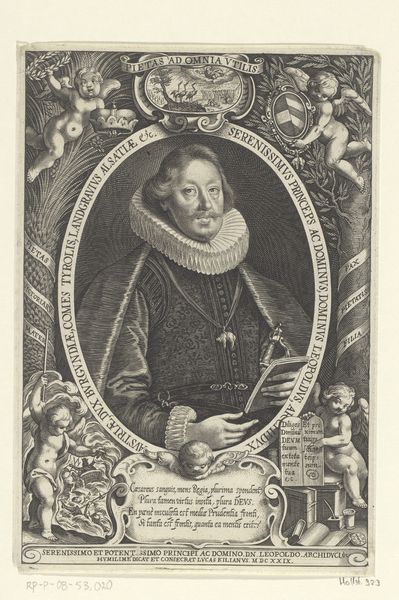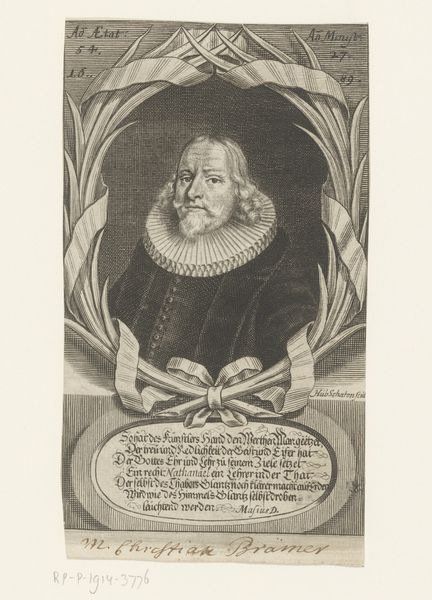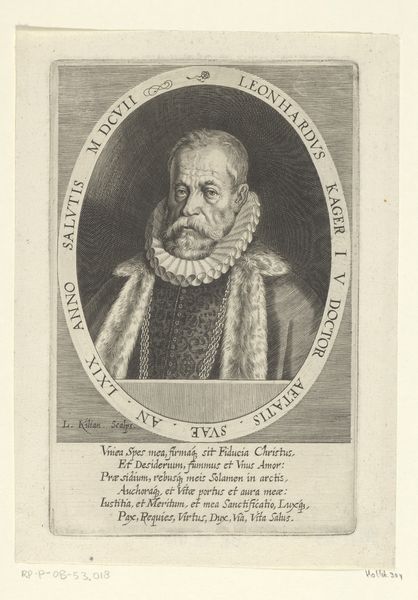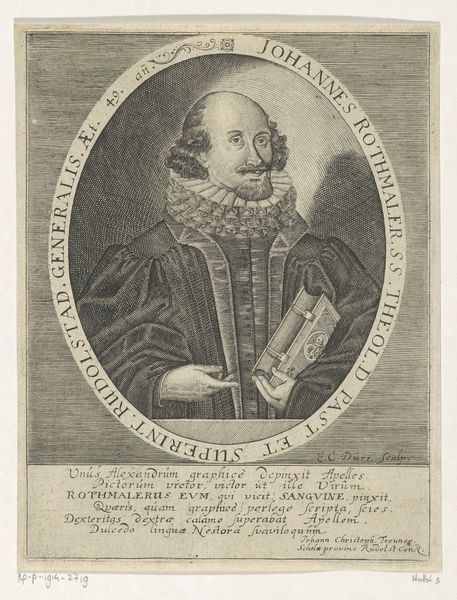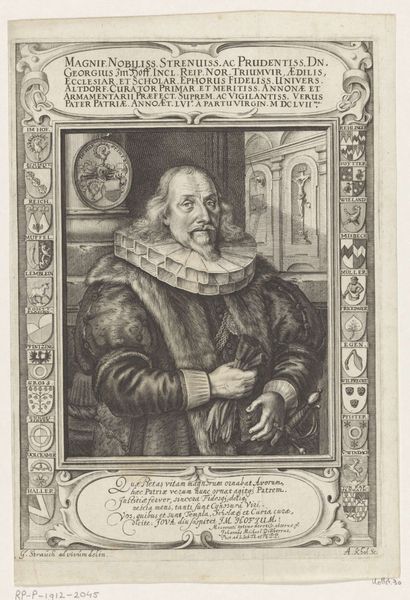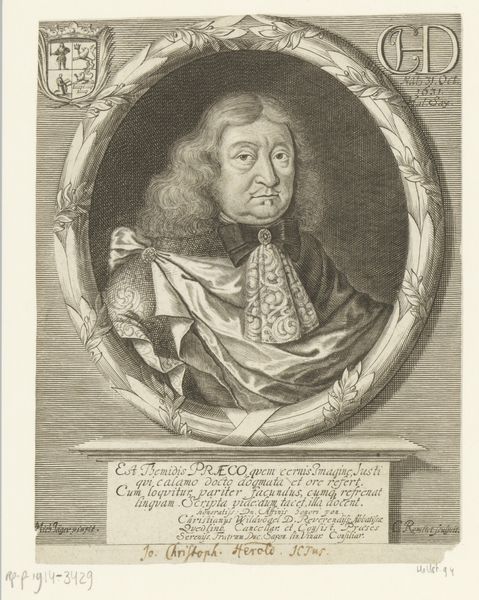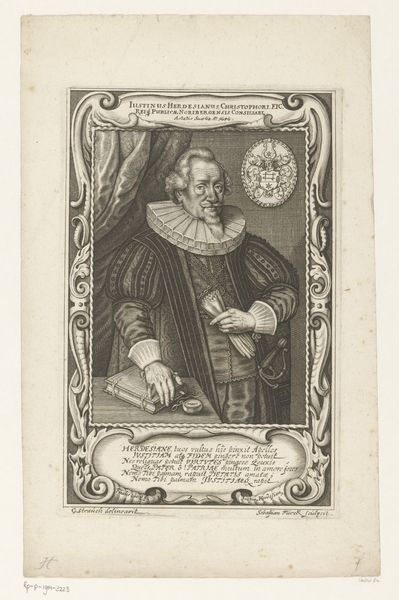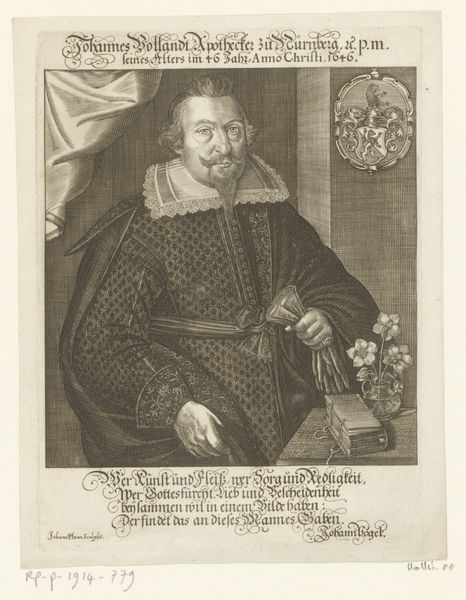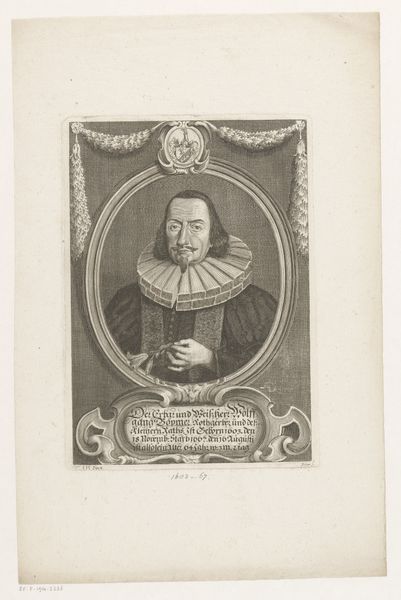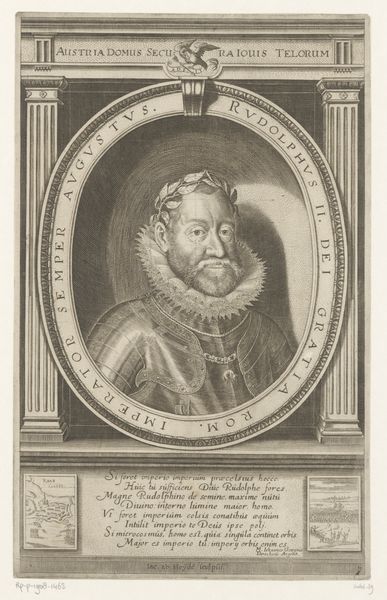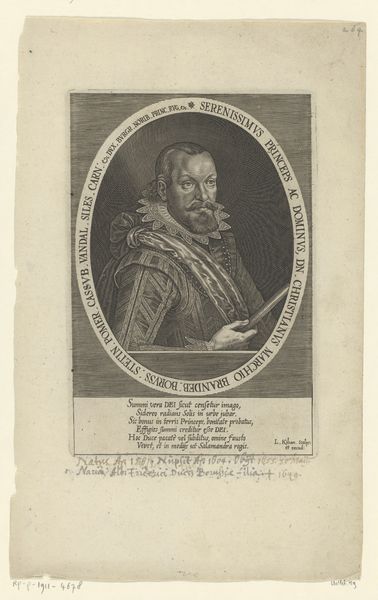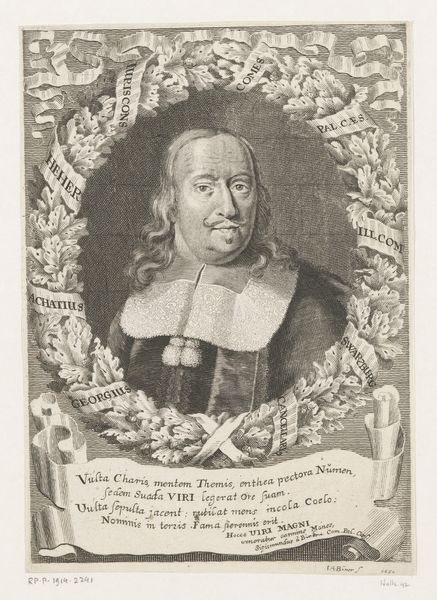
engraving
#
portrait
#
baroque
#
book
#
old engraving style
#
personal sketchbook
#
19th century
#
history-painting
#
engraving
Dimensions: height 234 mm, width 147 mm
Copyright: Rijks Museum: Open Domain
Curator: Here we have a compelling engraving, likely from between 1588 and 1637. The museum attributes it to Jacob van der Heyden. The artwork is titled "Portret van Johann Friedrich Schmid." Editor: The first thing that strikes me is the weight of this portrait. The sitter seems very formal, self-conscious, and the visual language, all heavy embellishment, mirrors that formality. It is almost austere. Curator: As a portrait, its symbolic density is quite fascinating. See the ovals surrounding the main image filled with crests, objects, and inscriptions? It reminds us that portraiture, particularly of this era, served to transmit specific, codified information about the subject's identity, status, and affiliations. Look at the symbols for the city of Leiden in the upper right corner. Editor: Yes, that's what speaks to me. How visual representation was utilized as a means of reinforcing power structures. Each object signifies not just identity, but how that identity intertwines with broader political and social narratives. Notice his direct gaze, and also the book he’s holding–almost certainly meant to reinforce an image of erudition. Was this person a leader or intellectual in the region? Curator: Johann Friedrich Schmid was a jurist and influential advisor. That book indeed is a symbol, signaling his profession, a visual declaration of his learnedness and devotion to scholarly pursuits. It acts as a crucial element in constructing his desired public image. Note the ornate frame decorated with various crests and mottos – each element carefully selected. Editor: So every detail of the engraving, from his clothing to those emblems, forms a visual vocabulary articulating his significance. But what happens when these symbols lose their original context? Now we stand looking at something rich in symbolism and historical weight, but removed from the specific cultural context it initially operated within. Who has access to knowing, or even caring about all the iconology included? Curator: Precisely. Today, much of that coded language is lost without interpretive context. But what remains powerful is the aura of authority and the enduring quest to shape our image for posterity through symbolism, what can it tell to future generations? Editor: It reveals, for me, the constant negotiation between the individual and systems of power and social status through time, manifested even in something as ostensibly simple as a portrait. How will be seen depends also on how we see it and what symbolisms we embrace today.
Comments
No comments
Be the first to comment and join the conversation on the ultimate creative platform.
